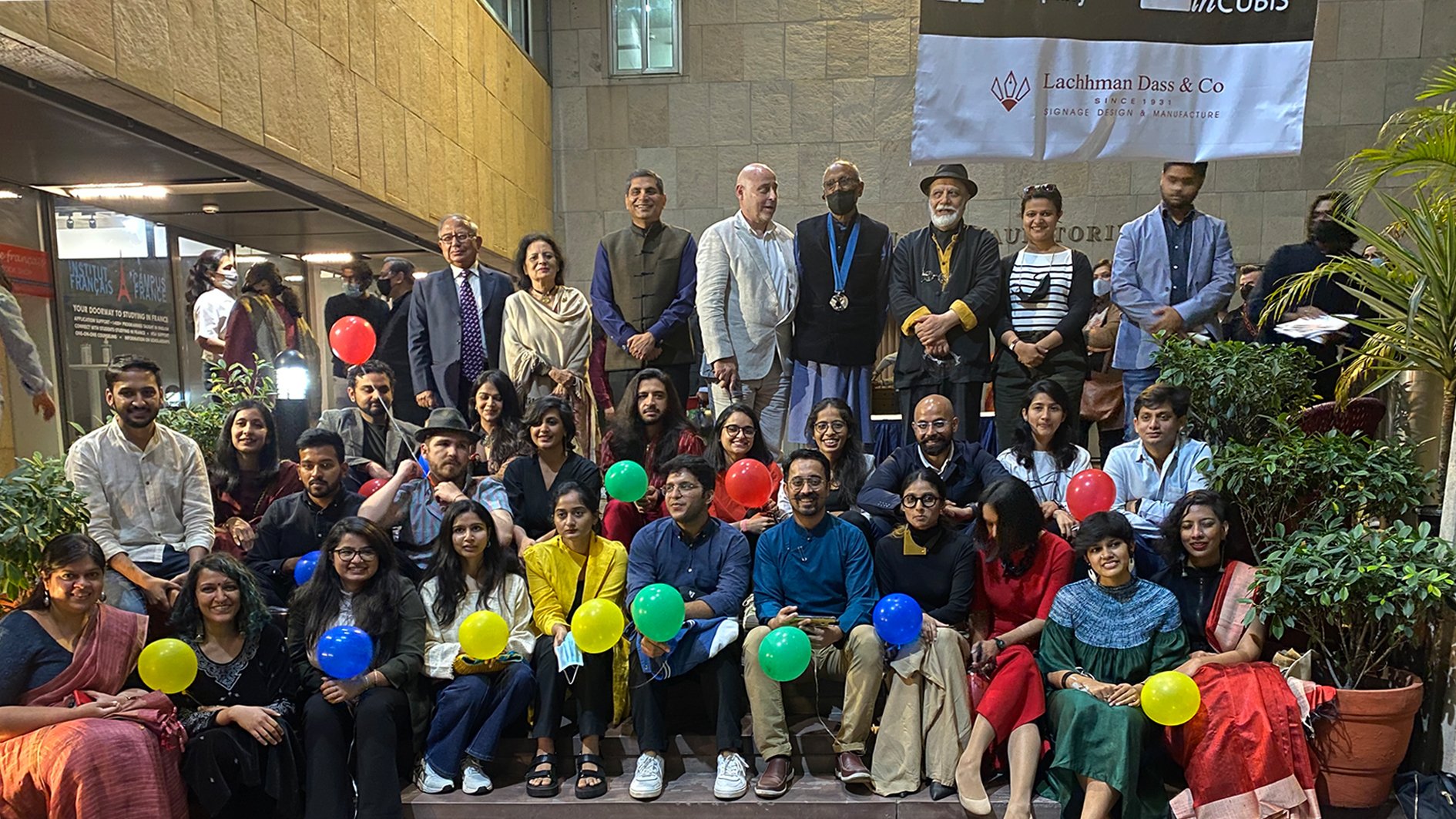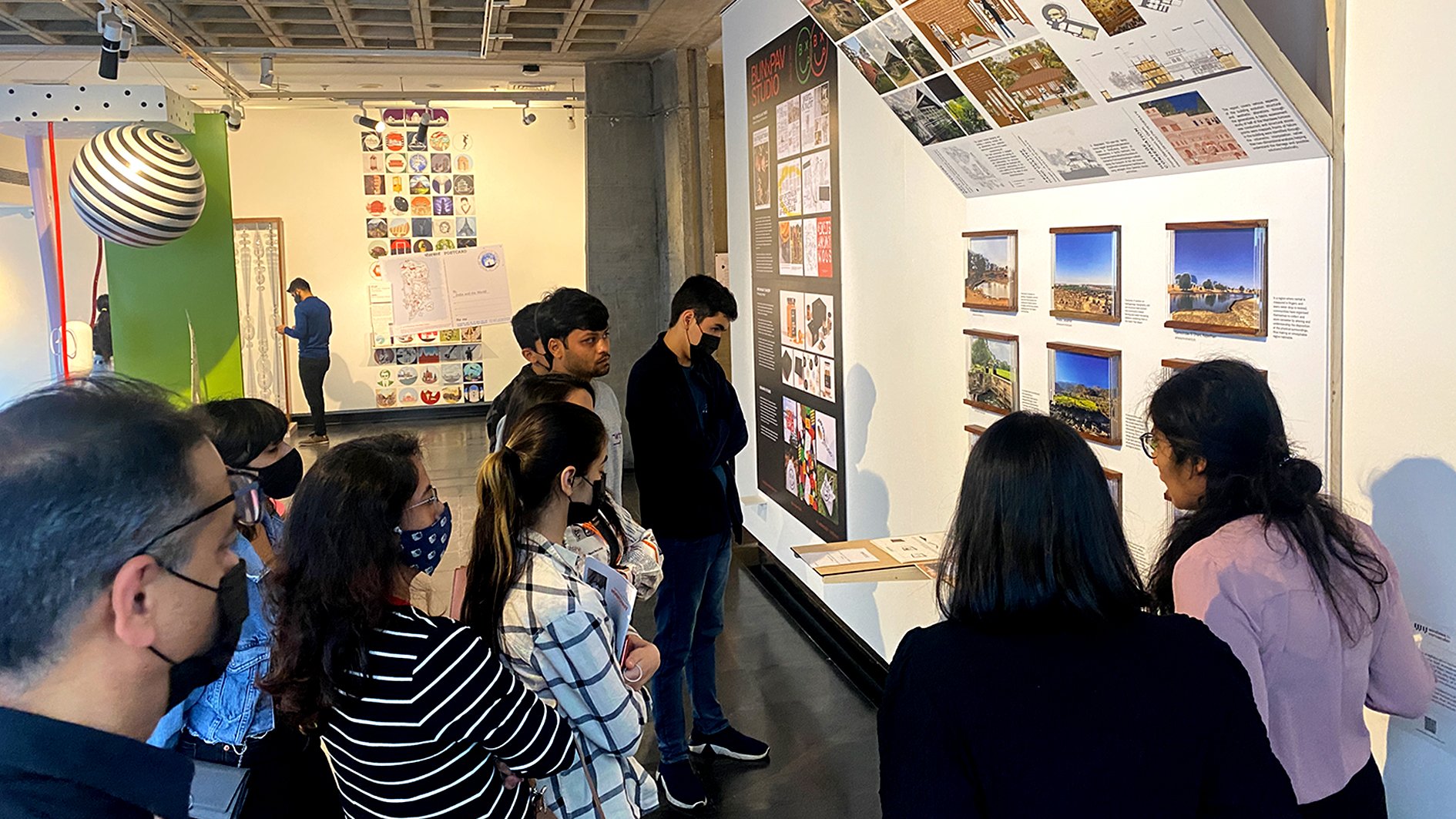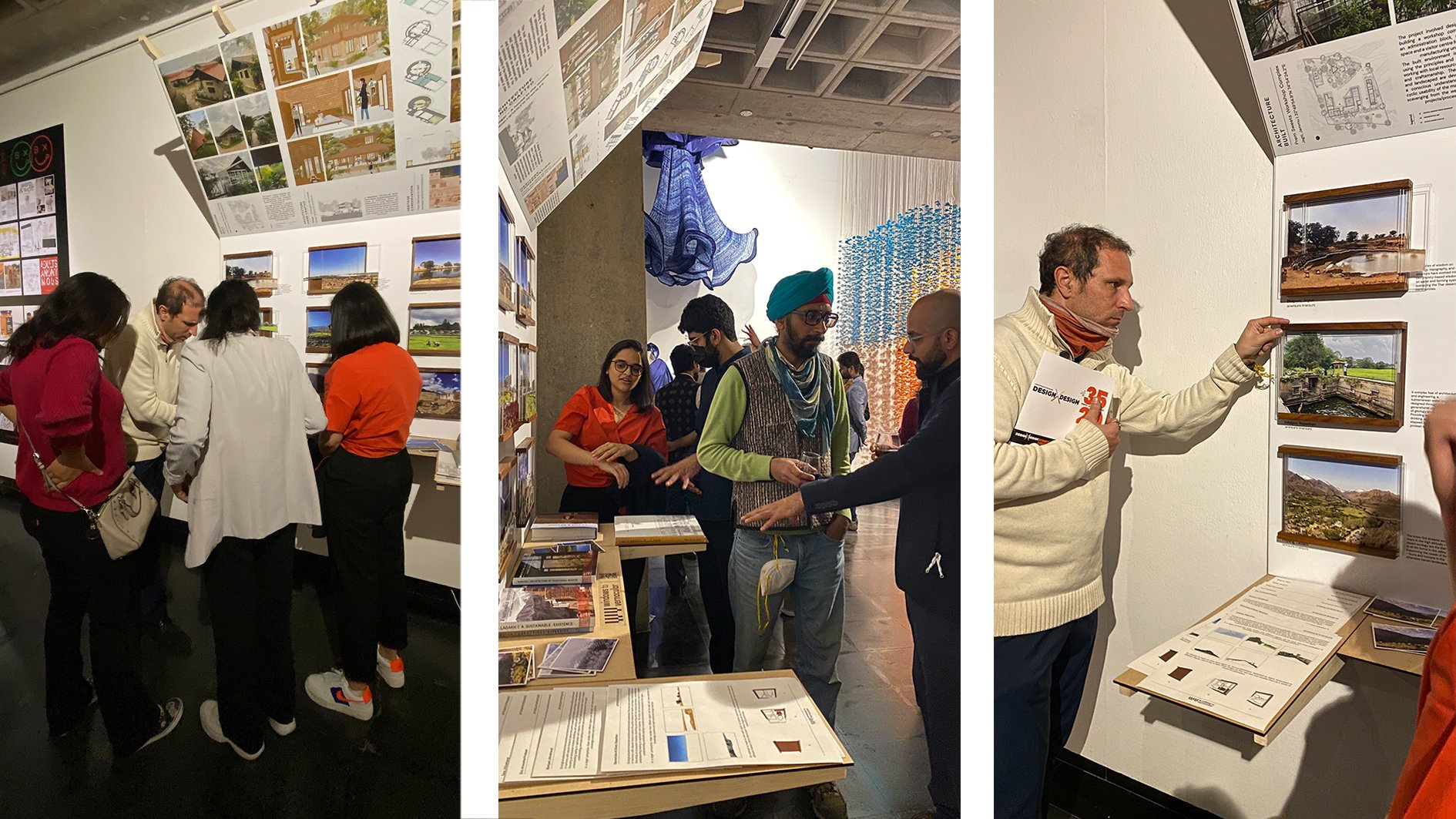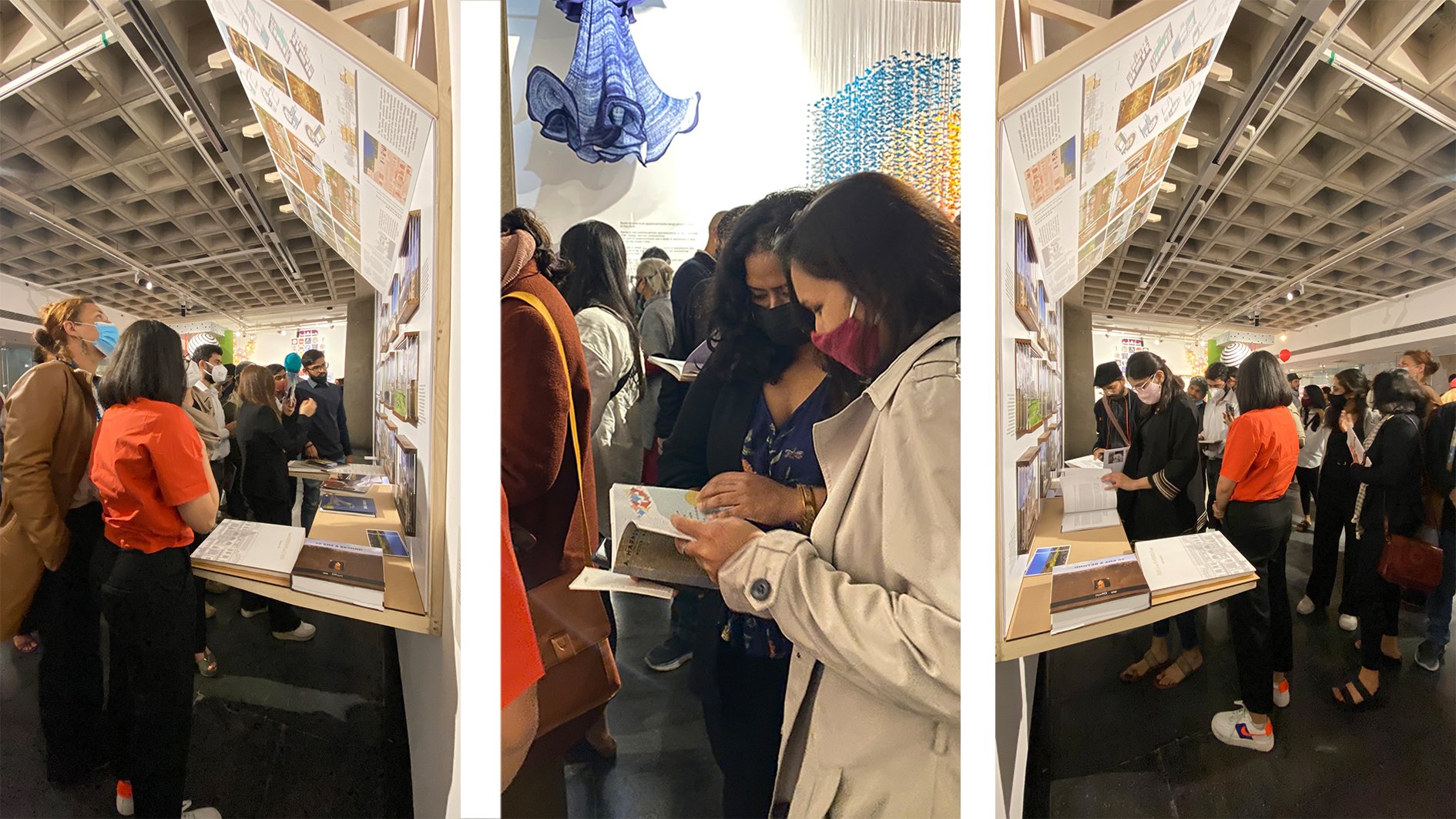design x design : 20 under 35 exhibition
The 20under35 exhibition is a promotional interface curated by DesignXDesign to show and see the work of selected young, energetic and promising designers under the age of thirty-five to facilitate the reading of emerging values, tendencies and concerns cutting across various design domains. It shares the philosophies, working methods, and future aspirations of 20 shortlisted designers aiming to raise levels of appreciation and foster cross-connections and informed journeys ahead.
As part of the 2022 cohort, the team showcased the different research, architecture, and publishing verticals they have worked on since 2016. The exhibit was divided into three parts
Research parallax: It explored the research methodology by breaking down a place into different parameters like geology, topography, typology, culture, climate etc, allowing one to understand the importance of layers for a more holistic understanding.
Architectural application: It explored the in-practice application of the research into architecture and conservation projects.
Documentation: It presented the compilation of the various research studies over the years.
The team presented their work at Gallerie Romain Rolland, Alliance Francaise de Delhi, 72, Lodhi Estate, New Delhi, from the 26th of February to the 17th of March, 2022.









Bhapura, Jaipur 26°44’55.4”N 75°38’32.2”E Semi arid regions with limited vegetation palette and water resources, seasonal lakes/ponds are formed in natural depressions like the lakes collecting water are crucial means are used judicially by them for the survival of the pastoralist communities in the of the country. The soil structure supports hardy, drought-resistant plants that dot the landscape provide for temporary relief from the harsh sun.

Phyang, Ladakh 34°11’22.4”N 77°29’52.0”E The snow-fed streams and rivers in the high altitude cold desert ecology are the lifeline to all life forms in the valley. Supporting the needs of flora - fauna and humans in the otherwise barren landscape.

Ziro, Arunachal Pradesh 27°35’53.4”N 93°50’15.5”E A self-sustaining community situated in the eastern Himalayan ranges, where the community has worked with the relatively flat land and rich ecological knowledge of natural resources and watershed management, ensure redirection of the perennial streams through the valley to sustain the farms and sacred grooves.

Baniyari, Uttarakhand 30°24’35.9”N 79°3’33.7”E A marvel in the water management systems where the stream water from the mountain is tapped, redirected, stored and used for farming. The system's design allows the overflows to go back and rejoin the river showcasing sensitivity to ecological wisdom.

Ganeshdas Ki Dhani, Jaisalmer 26°50’8.0”N 70°43’27.2”E In a region where rainfall is measured in fingers, and every water drop is revered, communities have organised themselves to collect and store rainwater by altering and understanding the disposition of the physical surroundings, thus making an inhospitable region habitable.

Khaba, Jaisalmer 26°48’42.4”N 70°40’24.6”E Centuries of wisdom on hydrogeology, topography, and soil structure have evolved into community-based farming and water harvesting systems, sustaining them in the harsh Thar desert.

Basgo Fort, Ladakh 34°13’26.7”N 77°16’36.8”E Centuries-old fort in the cold desert of Ladakh integrates the geological and topographic features of the hill to provide a formidable defence barrier. The material and the structural palette is a derivative of the resources available in the region to provide stability and comfort against the forces of nature.

Saur, Uttrakhand 30°23’49.1”N 78°20’03.8”E Altered contours within the Himalayan valleys, the terraced farms and settlements are oriented within the topographical bowl to maximise the climatic factors to ensure comfortable living conditions for the community and their animals.

Udaipur, Rajasthan 24°31’50.9”N 73°43’23.9”E A complex feat of architecture and engineering, a subterranean water source designed through a multi-generational understanding of geology and hydrogeology. Providing water for irrigation, drinking, and recreation, the stepwell is an extensively used protean structure.

